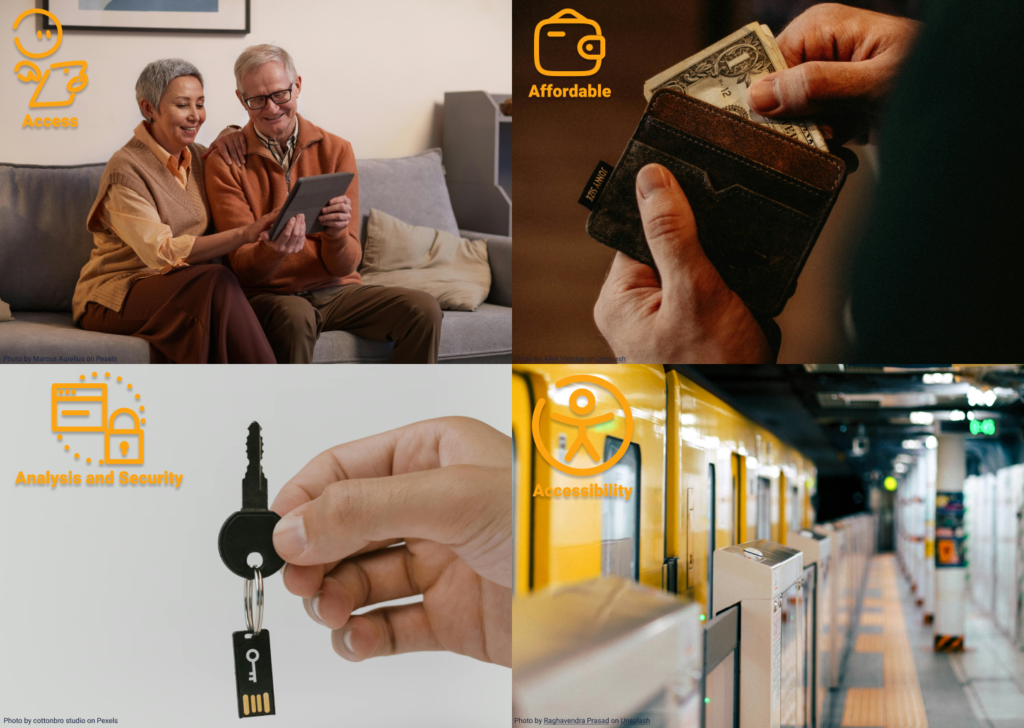Smart City as a term made its first appearance in the early 1990s, and researchers have emphasised technology, innovation and globalisation in the process of urbanisation. According to British Standards Institute, they defined Smart Cities as “the effective integration of physical digital and human systems in the built environment to deliver a sustainable, prosperous and inclusive future for its citizens”.
Based on the UN Urbanisation prospect of 2018, there will be more people live in urban areas globally than those who live in rural areas. By 2050, 68 per cent of all human population is projected to dwell in urbanised areas. As we race towards this future, a critical question emerges. Are we building smart cities for all or are we inadvertently creating new forms of digital exclusion.
What are the pillars at play to ensure Smart Cities Inclusivity?
According to International Telecommunication Union playbook, there are four key pillars: Access, Analysis and Security, Affordability, and Accessibility.

Access pillar means to ensuring universal connectivity and access to networks and new technologies is crucial. Whilst 93% of the world’s population lives within reach of mobile broadband, only 53.6% actually use the internet. Bridging this gap is a must.
Analysis and Security pillar means that as cities become more data-driven, protecting privacy and ensuring cybersecurity become essential. As the UN roadmap for digital cooperation outlined, new technologies are too often used for surveillance, censorship, repression, and online harassment. Not all technologies usages are being conducted morally, which is why effective due diligence is required to ensure that the use of ICTs abides by human rights principles.
Affordability pillar means to remove or reduce the barrier regarding to the cost of devices and internet service, specifically for vulnerable groups. This requires supports from national policies aimed at making technology more affordable. Many developing nations have good broadband coverage; however, the cost of internet plans at home is significantly unaffordable to many vulnerable groups, including women, older adults, and people with disabilities.
Accessibility pillar means that we are not only we include those who are in vulnerable groups now but for those who potentially require special need in the future. Based on the WHO and world report on disability, around 15 per cent of the world’s population live with some form of disability (over a billion people). In the next 30 years, we are going to have over 2 billion people aged above 60, over one billion people will have a disability, and over one billion young people will be at rick of hearing loss due to recreational exposure to loud sounds.
What are the elements to build inclusive Smart Cities environments?
Inclusive Smart Cities environments have the roles to play at various sectors. In health sector, smart solutions can offer more efficiency into retrieving a patient’s health history, enabling personalised care. In E-government sector, it can empower the people to access public services online and enhance citizen participation with public projects or surveys. By giving the people a platform to voice their opinions, share their grievances, and offer advices, cities can implement better governance and changes that truly benefit all people. In transportation sector, it can improve urban mobility by giving real-time geolocation of the public transportation or suggest the optimum time to leave your home to avoid heavy congestion. In sanitary sector, it can help optimise waste collection points in the district and it can alert the people in the district about the next garbage collection date and time.
The International Telecommunication Union has developed at toolkit called “The Toolkit on Digital Transformation for People-Oriented Cities and Communities”. The toolkit include:
- A one-stop guide containing lasted international standards and other ITU and UN resources, publication and reports.
- An endeavour to identify the challenges faced by cities as well as potential solutions that they can leverage for maximum positive impact.
- A comprehensive, yet non-exhaustive collation of information that meant to inspire and support progress toward the SDGs, especially SDG 11, at the local level.
The United for Smart Sustainable Cities (U4SSC) is an international platform for information exchange and partnership building to guide cities and communities in achieving UN Sustainable Development Goals.
The G20 Global Smart Cities Alliance established to help accelerate best practices, mitigate potential risks, and foster greater openness and public trust. Their aim is to help cities identify and adopt foundational policies for smart cities technology. They have the resources to support cities’ leaders with policy roadmap, which can be used as a baseline for effective technology governance.
G3ICT Smart Cities for All initiative’s mission is to build a global community to advance the fundamental human right of persons with disabilities to digital access. They aim to create a world where all persons with disabilities will have equal access to digital content, products, services, and environments according to the principles of the Convention on the Rights of Persons with Disabilities (CRPD), the eight Human Rights treaties of the United Nations.
Building a smart cities city for all is challenging, but it is the challenge that we all need to overcome in order to ensure inclusive future for everyone. As we are adopting new technologies, we must consider the four pillars of Smart Cities Inclusivity: Assess, Analysis and Security, Affordability, and Accessibility. Inclusion should be the top priority to guarantee that all people can access digital technologies and services. Only then can we claim to have created the smart cities that are built for everyone.